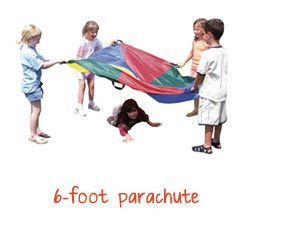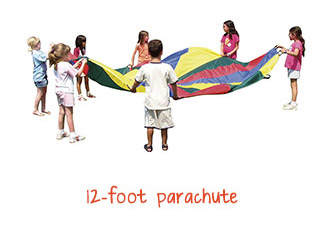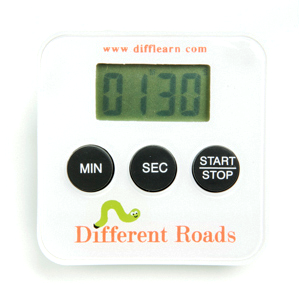Recently I began working with a family who has a six year old boy with autism named Austin (all names and identifying details have been changed to protect confidentiality). His mother was describing Austin’s behaviors when he couldn’t have something he wanted. She told me about him hitting his parents and younger brother, sweeping all materials off tables and shelves, and throwing himself on the floor. She was worried that he might hurt himself or hurt someone else. She told me that when he started this behavior, they would say, “Stop hitting.” They had been doing this for months, but his behavior had not improved.
 Later that week, she sent me a video of Austin having one of his “mega-tantrums.” It was exactly as she described, though there was one important detail she had missed. Austin consistently sought out eye contact and physical contact with both of his parents. If they were moving around to pick up an item, he would move his body and face to maintain eye contact. If one of them sat down, he would quickly clamber into their lap while screaming and pounding their arms or the furniture. If one parent walked out of the room, he would immediately run to the other parent. This behavior was clearly maintained by attention. In order to decrease the behavior, his parents had the very difficult task of ignoring it ahead of them.
Later that week, she sent me a video of Austin having one of his “mega-tantrums.” It was exactly as she described, though there was one important detail she had missed. Austin consistently sought out eye contact and physical contact with both of his parents. If they were moving around to pick up an item, he would move his body and face to maintain eye contact. If one of them sat down, he would quickly clamber into their lap while screaming and pounding their arms or the furniture. If one parent walked out of the room, he would immediately run to the other parent. This behavior was clearly maintained by attention. In order to decrease the behavior, his parents had the very difficult task of ignoring it ahead of them.
The next week I went out to their house to help them practice ignoring the behavior. We put in place a three-pronged plan:
- When Austin wanted something he was not allowed to have, he would be given a choice of options. The options should be for preferred activities. For example, if he wants to watch TV but isn’t allowed to right now, the parent can say, “Austin, you can play with trains or you can do a puzzle.”
- Once Austin starts hitting or screaming, he does not receive any attention. This includes eye contact, physical contact, and verbal prompts/reminders from his parents.
- The parents can start one of the motivating activities in another location. For this family, the parents sat with the younger brother at the dining room table and the mother read a book out loud.
As I had forewarned the parents, Austin’s behavior initially intensified as he realized he was getting zero attention. He took a box of toys, turned it upside down, and dumped it all over the floor. His mother kept reading to his brother. He ran over to his father and hit his legs while screaming, the father got up and walked away. Then, Austin did something he had never done before. He climbed up onto the table and started walking around on the edge of it.
His mother looked at me and said, “How do I avoid giving him attention for that?” This is when it’s important to consider high-quality attention and low-quality attention. In order to keep him safe, his mother needed to be more proximal. She walked near where he was on the table, but did not pick him up, did not make eye contact, and did not speak to him. (I let her know that if she felt he was very unsafe, she could pick him up and remove him from the table but quickly letting him go, and withholding eye contact and verbal interaction.) She stayed nearby to catch him if he fell, but she did not provide attention for this dangerous behavior. Her proximity (or if she had chosen to pick him up off the table without eye contact or verbal interaction) constitutes low-quality attention. High-quality attention is only saved for appropriate behavior.
Think about what high-quality attention means for a young child: big facial expressions, expressive tones of voice, big movements, and physical contact. Prior to our intervention, Austin was getting all of those types of high-quality attention for inappropriate behaviors. But now he wasn’t getting any of that type of attention.
However, Austin had been engaging in inappropriate behaviors for attention for 2-3 years now, so changing this behavior takes a little time. For our first day of the intervention, Austin continued to yell and throw items for 40 minutes before he finally went over to where his mom was sitting and reading aloud the story (actually, the third story in a row). When he was near and quiet, his mom started reading in a wonderfully expressive tone, adding voices to the characters. Austin came closer. When a funny part of the story happened, Austin laughed. And then Austin’s mother encouraged him and his brother to imitate the characters in another part of the story. After he imitated the characters, he sat next to his mom and she put her arm around him. All of these high-quality forms of attention were now being given for appropriate interaction.
Sometimes you have to provide some attention in order to keep a child safe, but think to yourself what is high-quality attention for your learner: it may be tickles, silly faces, expressive speaking, or physical contact. Reserve those things for appropriate behaviors.
A few final notes about this intervention: (1) Austin’s inappropriate behaviors will probably still continue for a little bit longer. I’m certain that he will test it out a few more times, and his parents will have to stick to the intervention in order to completely get rid of what they had deemed as “mega-tantrums”; (2) This intervention only works for behaviors maintained by attention. If you’re uncertain about the function of a behavior, confer with a BCBA or an ABA provider for help; and (3) If you’re not certain you can follow through if the behavior persists for a long time (such as 40 minutes in Austin’s case) then give in the first time the learner asks. For more information on this, look back at my tip on Choosing When to Battle.




 Later that week, she sent me a video of Austin having one of his “mega-tantrums.” It was exactly as she described, though there was one important detail she had missed. Austin consistently sought out eye contact and physical contact with both of his parents. If they were moving around to pick up an item, he would move his body and face to maintain eye contact. If one of them sat down, he would quickly clamber into their lap while screaming and pounding their arms or the furniture. If one parent walked out of the room, he would immediately run to the other parent. This behavior was clearly maintained by attention. In order to decrease the behavior, his parents had the very difficult task of ignoring it ahead of them.
Later that week, she sent me a video of Austin having one of his “mega-tantrums.” It was exactly as she described, though there was one important detail she had missed. Austin consistently sought out eye contact and physical contact with both of his parents. If they were moving around to pick up an item, he would move his body and face to maintain eye contact. If one of them sat down, he would quickly clamber into their lap while screaming and pounding their arms or the furniture. If one parent walked out of the room, he would immediately run to the other parent. This behavior was clearly maintained by attention. In order to decrease the behavior, his parents had the very difficult task of ignoring it ahead of them. One quote from the paper states, “Not only do people strive for freedom in a broad sense they also enjoy making simple choices, such as whether to engage in unproductive, though harmless, activities, like watching sitcoms on television, eating too many doughnuts, taking time off from work, or taking a nap before dinner.” In an effort to teach our learners independent skills, we often neglect to teach meaningful decision-making that reflects the types of decisions neurotypical adults make every day. Since the paper was originally published, there has been more work done on promoting decision-making skills for learners with developmental disabilities, but the issues described in the paper are still relevant today.
One quote from the paper states, “Not only do people strive for freedom in a broad sense they also enjoy making simple choices, such as whether to engage in unproductive, though harmless, activities, like watching sitcoms on television, eating too many doughnuts, taking time off from work, or taking a nap before dinner.” In an effort to teach our learners independent skills, we often neglect to teach meaningful decision-making that reflects the types of decisions neurotypical adults make every day. Since the paper was originally published, there has been more work done on promoting decision-making skills for learners with developmental disabilities, but the issues described in the paper are still relevant today.



 When faced with feeding issues, many parents or caregivers may not consider seeking out help from a BCBA or behavior analyst. There is a tendency to associate ABA with sitting at a table and completing discrete trials, but this is only one tool in a behavior analyst’s extensive toolkit. Whether you are providing intervention for feeding issues or seeking more information, it is essential to look to scientific research for help.
When faced with feeding issues, many parents or caregivers may not consider seeking out help from a BCBA or behavior analyst. There is a tendency to associate ABA with sitting at a table and completing discrete trials, but this is only one tool in a behavior analyst’s extensive toolkit. Whether you are providing intervention for feeding issues or seeking more information, it is essential to look to scientific research for help. Recently I took a thirteen-year-old boy with autism grocery shopping for the first time. We had practiced all of the steps for paying: looking at the total on the register, taking out the necessary bills or coins, waiting for change, making sure we had correct change, returning the money to the wallet, etc. While I thought he was ready to do this in a natural environment, I did not expect what actually happened.
Recently I took a thirteen-year-old boy with autism grocery shopping for the first time. We had practiced all of the steps for paying: looking at the total on the register, taking out the necessary bills or coins, waiting for change, making sure we had correct change, returning the money to the wallet, etc. While I thought he was ready to do this in a natural environment, I did not expect what actually happened. Keep your wallet in your hand, do not lay it on the counter.
Keep your wallet in your hand, do not lay it on the counter.